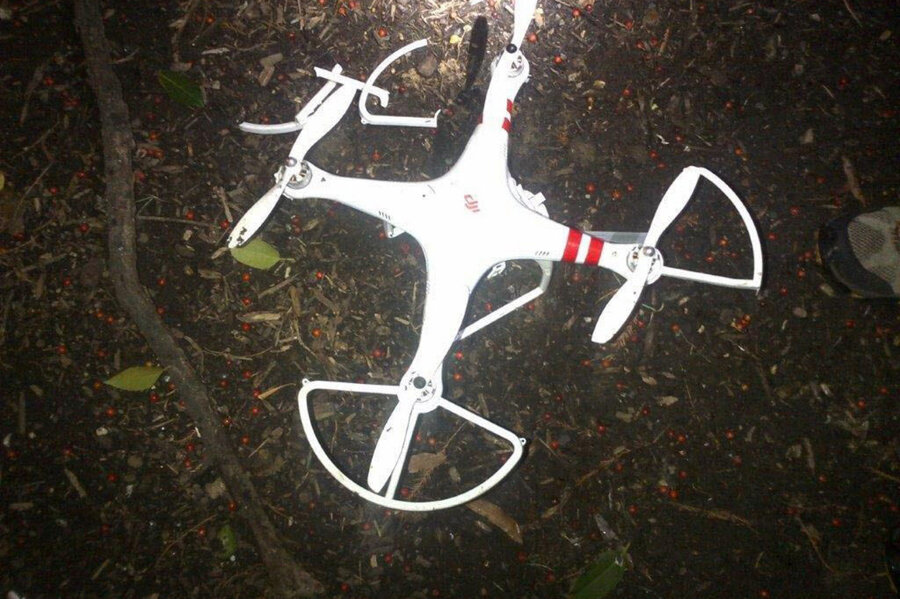Drone crashes near White House – again
Loading...
Howard Solomon III would like his drone back, please.
Officials cited the man for illegally operating a hobby-sized remote controlled aircraft that landed in a park close to the White House.
Officers first noticed the drone flying by the Washington Monument at around 1:20 a.m. Friday, according to US Park Police and the Secret Service. They found the operator after he lost control of the drone, which landed on The Ellipse, a park south of the White House.
Mr. Solomon, a resident of Washington, D.C., was cited for launching, landing, or operating an unmanned aircraft, according to Park Police. His drone was also confiscated.
Solomon says he was trying to photograph the Washington Monument when wind caused the drone to lose control.
After the Sept. 11, 2001, attacks, Washington and communities within 15-miles of Ronald Reagan Washington National Airport became a designated “No Drone Zone.” But the recent surge in recreational drone use has presented the Secret Service with new security threats, particularly at the White House.
In May, a drone-like device flying above a nearby park caused the White House to go on lockdown.
And as The Christian Science Monitor reported, a small drone crashed on the grounds of the White House in January, causing emergency vehicles to respond while Secret Service agents combed the grounds.
But what if an aircraft actually intended to target the White House?
Agents probably have a version of a hand-held, surface-to-air missile. It’s thought there is at least one longer-range defensive missile emplacement on a higher building outside the White House perimeter.
Small drones would require a different kind of defense, of course. Perhaps electronic jamming would work, or shotguns. If the Secret Service did not previously have a plan to defeat such a tiny intruder, it now has received a wakeup call indicating that it needs one.
This particular security breach in January occurred during a series of scandals that rocked the Secret Service, painting the agency as complacent and dysfunctional.
But as Ronald Kessler wrote for Time Magazine, the Secret Service takes this new threat seriously, and is actively developing strategies to adapt to an airspace made more accessible with drone technology:
The agency has consulted with the Energy Department’s national laboratories, which protect nuclear sites from attack, on what to do about them before a drone deploys a bomb or radiological, biological, or chemical agents at the White House.
The Secret Service, the national laboratories, and Defense Department are working on counter-measures that would zap the electronic components of drones with electromagnetic waves or disrupt their radio commands.





